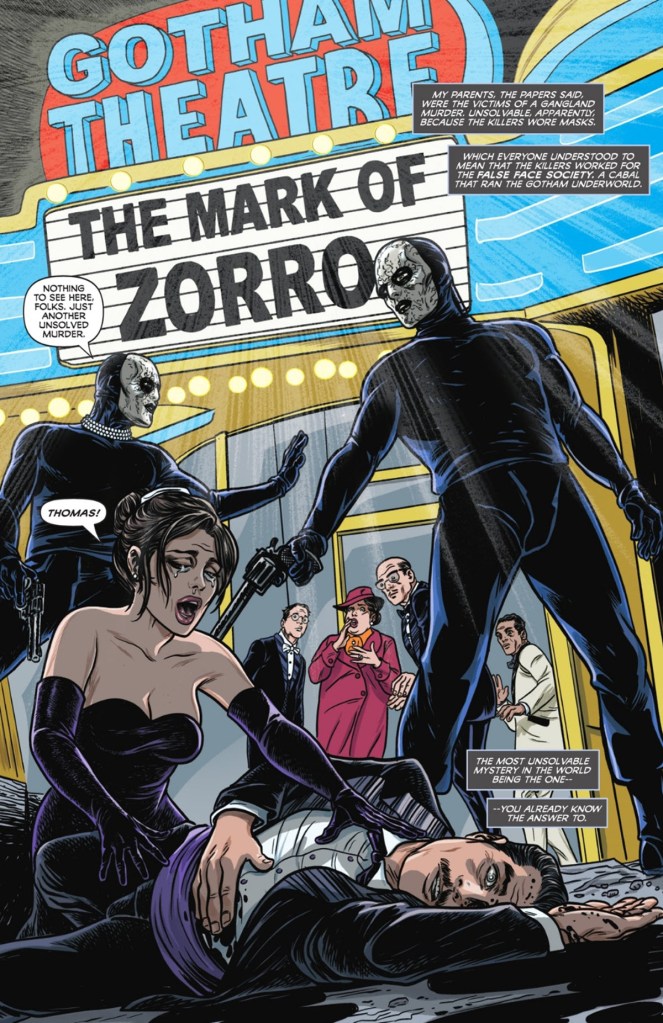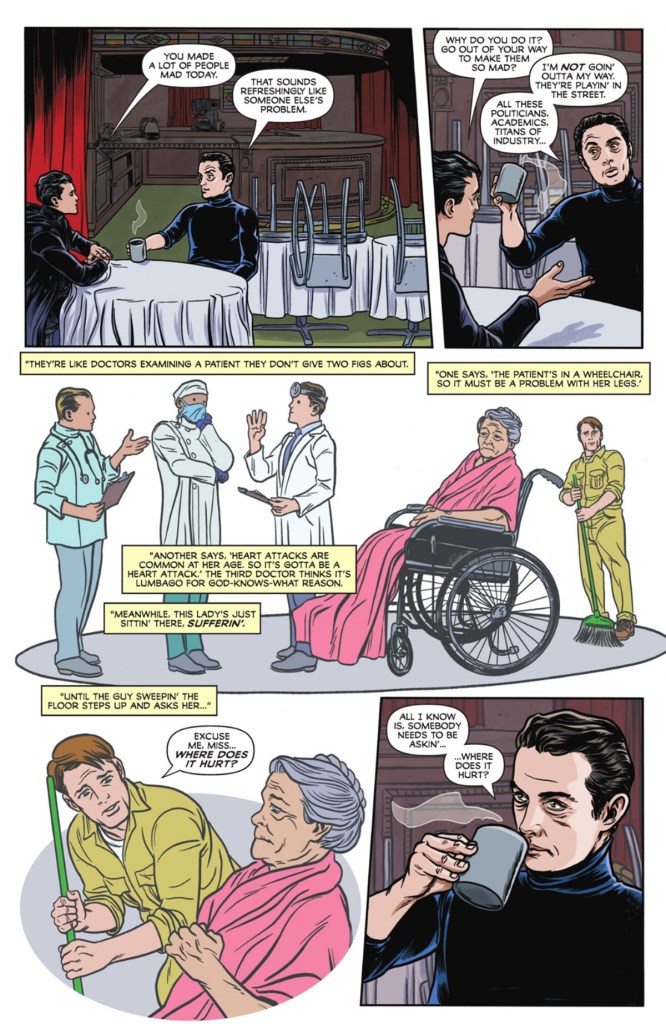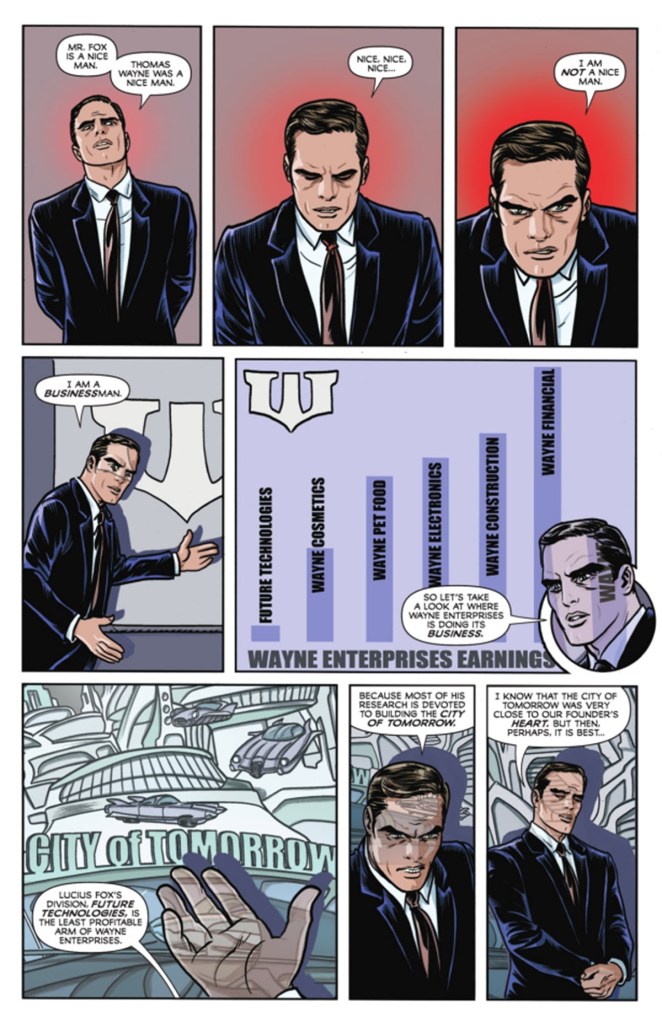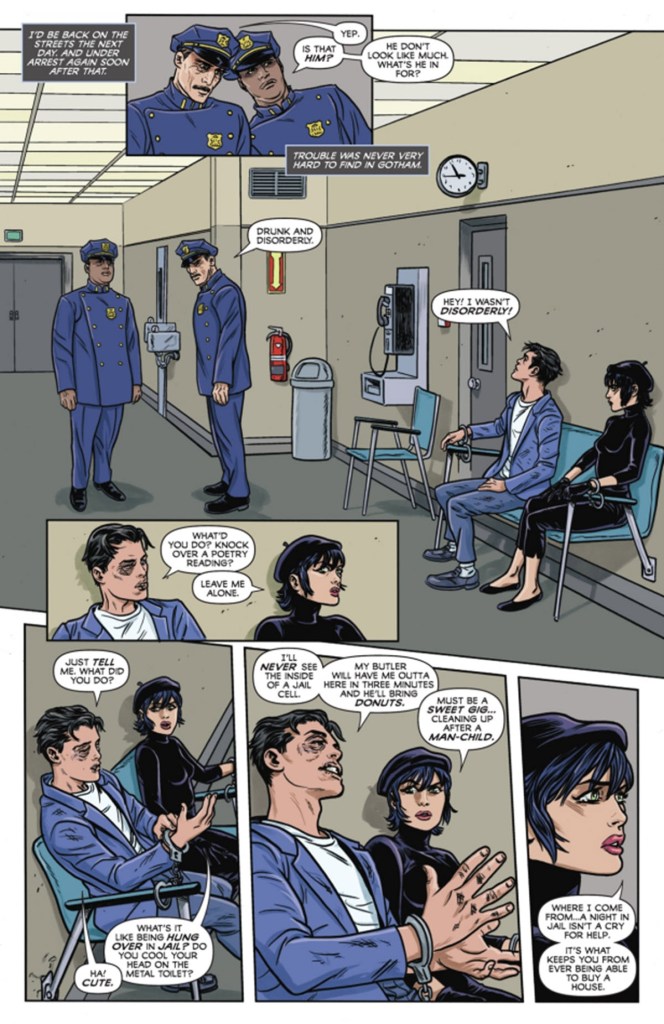Mark Russell and Michael Allred earned praise and award nominations for their work on Superman: Space Age. The retro alternative history reimagined the Man of Steel’s origins within the context of the 1960s. It also aged the Justice League in real time, showing them react to a changing world. Batman: Dark Age #1 does the same thing but with a focus on the Dark Knight and Gotham City.

There is little superhero action in Batman: Dark Age #1 beyond the opening flashback. The story is more concerned with Bruce Wayne and how this world’s Batman differs from his Earth-Prime counterpart. The most obvious differences are that the Waynes are murdered by the False Face Society rather than Joe Chill. Also, the young Bruce does not witness his parent’s deaths.

This is a significant change, and Batman: Dark Age #1 explores that difference for all it is worth. While Bruce is changed by his parents’ deaths, he is not inclined to seek justice. Indeed, he begins to act out, as one would expect from a child of privilege. He expects the world to give him what he is owed because of what he has lost. What Bruce is not given, he takes, whether engaging in petty theft or buying businesses whose staff annoy him.

This sets up some of the best sequences in Batman: Dark Age #1, including his first encounter with a Beatnik Catwoman. Many of the most powerful scenes of Superman: Space Age found the familiar DC Comics characters interacting with real historical figures. The same thing happens here. However, rather than encountering real world business magnates, young Bruce Wayne’s world view is shaped by another famous Bruce – coffeehouse comedian Lenny Bruce.
The Deeper Meaning of Batman: Dark Age
Batman: Dark Age #1 would be an interesting read if it were merely an alternate take on how Bruce Wayne became Batman. However, Mark Russell goes a step further. Thematically, the book tackles the same themes as Superman: Space Age and how the optimism of the mid-20th century was subverted by American Industry. This time, however, the focus shifts from how Lex Luthor destroyed the dream of cities on the moon to how Black Mask destroys Thomas Wayne’s vision of the City of Tomorrow. The villain is different, but the message and motivation are the same: profit today at the cost of a better tomorrow.

As with that earlier series, Michael Allred is the perfect artist to illustrate this story. Allred’s art has a unique strength and clarity, which pairs modern comic aesthetics with classic four-color designs. The clean characters and vivid colors of Laura Allred stand out in ironic contrast to the bleak messaging. The Dark Age has never looked brighter, even as the text paints a bleak picture of how greed is destroying Gotham City and corrupting Bruce Wayne. However, as with most comics by Russell and Allred, there is a silver lining amid the dark clouds. Amid the gloom and doom, there is also hope.
Batman: Dark Age #1 is Not a Predictable Story
Batman: Dark Age #1 ends on a shocking and frankly unexpected cliffhanger. As the story closes, Bruce Wayne is no closer to a grand revelation as to why he must care for others. There is no indication of how the spoiled brat prince of Gotham will become the stalwart Dark Knight.

However, that unpredictability is welcome, given how static most Batman adventures are. We know how this Batman’s story ends, in a rest home as he struggles against dementia to write his history before he forgets it. However, there is no indication of what the journey before that point holds. That in itself makes Batman: Dark Age #1 worth reading.
Grade: 5/5
Batman: Dark Age #1 is now available at comic shops everywhere.





